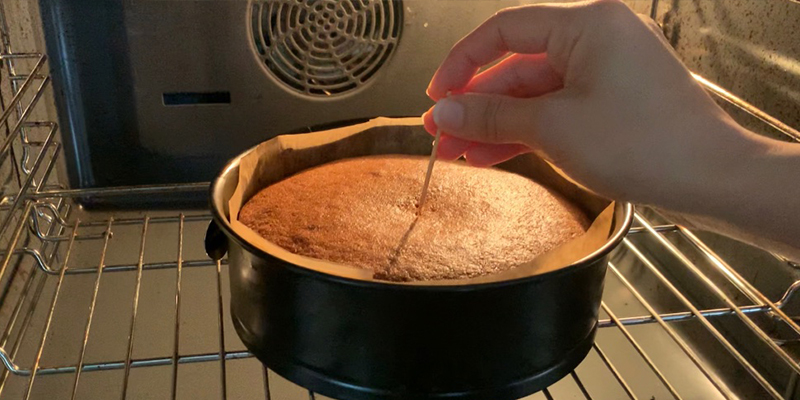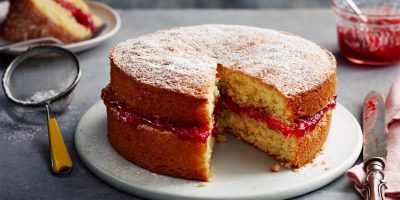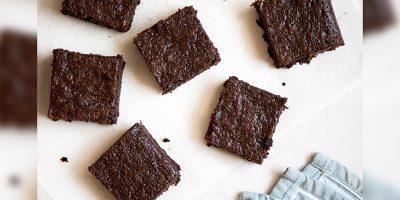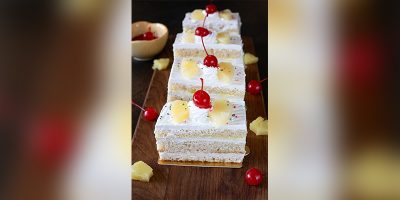Baking a cake can be a rewarding experience, filled with the joy of creating something delightful and delicious from scratch. However, even seasoned bakers encounter occasional hurdles that can turn this sweet endeavor into a challenging task. In this comprehensive guide, we’ll dive into some frequent cake baking issues and offer effective solutions to ensure your baking efforts yield perfect results every time. From choosing the right ingredients like Cake Flour to mastering various cake making techniques, this post has you covered.
1.Overly Dense Cake
The problem of a cake being overly dense rather than airy and fluffy is a common dilemma among bakers. This is usually related to the method of combining the ingredients.
Solution:
To achieve a lighter texture, it is crucial to focus on creaming the butter and sugar meticulously. You should beat them together until the mixture becomes pale and fluffy, which may take several minutes. This step is vital as it incorporates air into your batter, providing the necessary lift during the baking process. Moreover, using cake flour instead of all-purpose flour can also make a significant difference. Cake flour is milled to a finer consistency and contains less protein than all-purpose flour, which helps create a softer and less dense cake structure.
2. Uneven Rising:
An uneven rise in a cake can result from various factors, including inconsistent oven temperatures or the way the batter is arranged in the baking pan.
Solution:
Ensuring your oven temperature is consistent and accurate is crucial; use an oven thermometer to check. When pouring the batter into the pan, strive to distribute it as evenly as possible to avoid uneven baking. Rotating the cake pan halfway through the baking time can promote a more uniform rise. You might also consider using baking strips around the edges of your cake pan. These strips cool the edges of the pan slightly, allowing the entire cake to rise at a more even rate.
3. Dry Cake:
A dry cake is often a disappointment, especially when you’re expecting a moist, delicious dessert.
Solution:
One of the best ways to prevent a dry cake is to be vigilant about the baking time. Begin checking your cake for doneness a few minutes before the recipe suggests. Insert a toothpick into the center of the cake; if it comes out clean, the cake is done. Ensure your oven temperature is accurate as well, as an overly hot oven can quickly dry out a cake. Consider lowering the temperature and slightly increasing the baking time, which can help the cake retain more moisture.
4. Cake Sticking to the Pan:
There’s nothing more frustrating than a cake that sticks and breaks when trying to remove it from the pan.
Solution:
Proper preparation of your baking pan is essential. Generously grease the pan with butter or use a non-stick spray, and don’t forget to line the bottom with parchment paper. This ensures that your cake can be removed easily without sticking or breaking. After baking, let the cake cool in the pan on a wire rack for about 10 minutes before attempting to remove it. This cooling period allows the cake to settle and shrink slightly from the sides of the pan, making it easier to remove.
5. Imperfect Frosting
Frosting can enhance or detract from a cake’s overall appeal, particularly when it’s too sweet or too runny.
Solution:
If you find your frosting too sweet, balance the sweetness by adding a pinch of salt or a few drops of lemon juice. If the frosting is too runny, ensure you start with butter that is soft but not melted. Add powdered sugar gradually to achieve the desired consistency. If needed, placing the frosting in the refrigerator for a short period before using it can help it firm up, making it easier to spread or pipe beautifully.
6. Sinking Middle:
It can be quite disheartening to see a cake that initially looks perfect but then the middle sinks as it cools.
Solution:
This often indicates that the cake has not been baked long enough. Ensure thorough baking by testing with a skewer or a toothpick before removing it from the oven. Additionally, keep oven door openings to a minimum during baking. Frequent temperature changes can destabilize the cake’s structure, leading to a collapsed middle once the baking process is halted.
Wrapping Words
Mastering the art of cake baking can initially present a steep learning curve. Common issues like uneven baking, sinking middles, or dry textures can discourage even the most enthusiastic bakers. However, by understanding the root causes of these problems and applying targeted solutions, such as adjusting oven temperatures, measuring ingredients accurately, or modifying the mixing technique, you can greatly improve your results. Remember, baking is both an art and a science, and practice is key to perfection. Moreover, exploring different cake making methods can also broaden your baking repertoire, allowing for more creativity and success in your baking endeavors. If you’re ever in a pinch or simply not in the mood to bake, consider ordering from Bakingo Cakes. Whether you choose to bake at home or order a ready-made masterpiece, the joy of a perfect cake remains the same.





